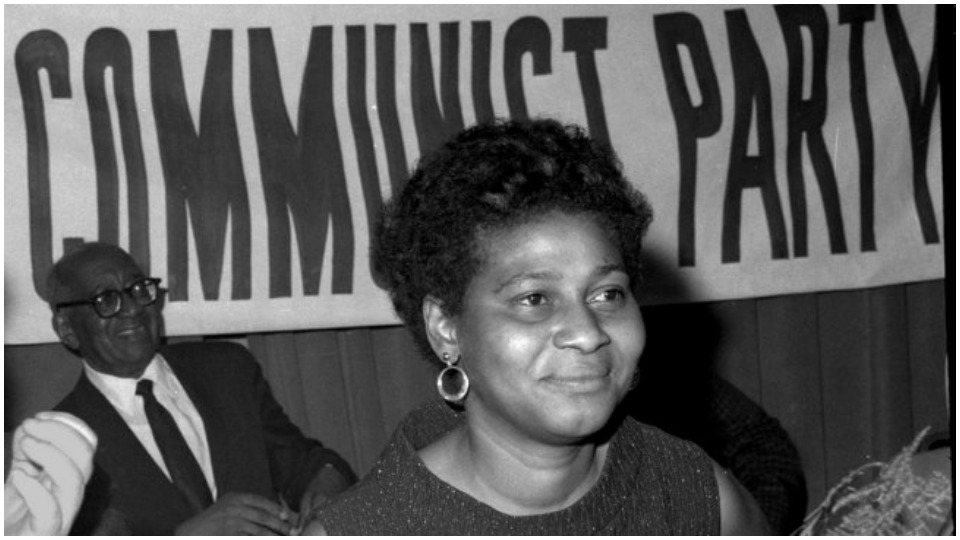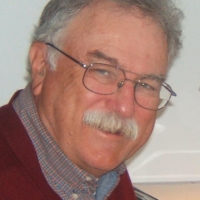
In celebration of its centennial, Tony Pecinovsky has written Let Them Tremble: Biographical Interventions Marking 100 Years of the Communist Party, USA, a book that profiles the lives of six Communist Party leaders. They are Arnold Johnson, Charlene Mitchell, Gus Hall, Henry Winston, Judith LeBlanc, and W. Alphaeus Hunton.
I suggest you order a copy from International Publishers. You have nothing better to do during the COVID-19 quarantine. Settle back with Let Them Tremble and read.
Pecinovsky chose to write about Communists in leadership after World War II because his intent is to refute the misconception that in the post-war era, the CPUSA was effectively destroyed by Cold War repression, factional strife, and the collapse of the Soviet Union.
On the contrary, through the lives of these six Communists, he shows the party playing a leading, if often behind the scenes role in every main arena of mass struggle.
I loved Pecinovsky’s portrait of Judith LeBlanc, a member of the Caddo Tribe of Oklahoma. She was a featured speaker at a rally of “nasty women” during the women’s mobilization against Donald Trump, Jan. 21, 2017, the day after his inauguration. The word “nasty” was Trump’s description of women like LeBlanc who fight back against his vile misogyny. Pecinovky reports that LeBlanc joined the Young Workers Liberation League in 1973 while on assignment with the American Indian Movement at the Pine Ridge Reservation in South Dakota during the faceoff with the invading FBI. In 1974, she joined the CPUSA. She argues in the book there can be no progress in the United States without winning full equality for the Native American Indian peoples.
As I read the chapter on Charlene Mitchell, reading quotes from speeches and articles she delivered in the 1960s, ’70s, and ’80s, I kept saying to myself: “This sounds like right now! It sounds like Black Lives Matter!”
Pecinovsky recounts Mitchell’s campaign for president in 1968, candidate of the CPUSA, the first African-American woman to run for President. He tells of the Party’s leadership in the struggle to save the life of Angela Davis, led by Charlene Mitchell, with much advice from Henry Winston, National Chairman, and Gus Hall, General Secretary, of the CPUSA. Both knew from personal experience something about fighting for their freedom from inside a jail cell.
The party created a mass movement to free Davis. From that victory came the creation of the National Alliance Against Racist and Political Repression that spearheaded the struggle to free frame-up victims like the Wilmington 10, Joan Little, and Frank Chapman. The Alliance, as we called it back in the day, has been reactivated, led by Frank Chapman. In the age of crypto-fascist Donald Trump, we need the Alliance more than ever.
For me, the emotional high point of the book is Pecinovosky’s chapter on Henry Winston, the beloved National Chairman of the CPUSA, the blind African-American man we always addressed as “Winnie.”
Pecinovsky follows Henry Winston from the moment he surrendered at the Federal Courthouse in Foley Square in New York City through to his witch-hunt trial and incarceration at Terre Haute Penitentiary. There, he developed crushing headaches. All his pleas for medical assistance were brushed aside. He had a brain tumor and almost died. At the last minute, they rushed him into surgery. He managed to survive, but when he recovered, he was totally blind. He was thrown back in prison.
> Let Them Tremble: Author Tony Pecinovsky discusses new book on CPUSA
> New collection of biographies recounts post-1956 U.S. Communist history
> Campus events recall Communist Party’s history of fighting racism
The Communist Party, despite continuous FBI harassment and fear tactics, continued to build the movement to free Winston. The target of this repression was not only the party and its members. It was grassroots people and leaders the party needed to reach to build the movement for Winston’s freedom and against repression in general. It is a tribute to these masses that they would not be silenced. They demanded Winston’s freedom.
I discovered, reading Pecinovsky’s book, that the Rev. Martin Luther King, Jr., joined in this struggle. He wrote a letter to fellow Atlantan, Benjamin J. Davis, Communist Councilman from Harlem (until he was expelled by the witch-hunters and imprisoned). In his letter, Dr. King writes, referring to Winston, “I think it is both immoral and tragic for a nation to allow any human being to face such an inhuman situation.” Dr. King followed up by speaking at a testimonial dinner for Winnie at Harlem’s Hotel Theresa in September 1961. Others who joined in demanding Winston’s freedom included Eleanor Roosevelt and A. Philip Randolph. Cuban leader Fidel Castro notified the U.S. authorities that he was willing to swap Winston for the release of terrorists captured during the abortive CIA Bay of Pigs invasion of Cuba.
President John F. Kennedy responded to the mounting pressure by granting Winston executive clemency.
Pecinovsky writes that less than a month after he was released, Winston convened a news conference and vowed to continue fighting for the goals he had always lived for—race equality, workers’ rights, world peace, and socialism. “My sight is gone but my vision remains,” Winston said.
That became one of the favorite battle cries: “They have robbed me of my sight but not my vision.”
The book focuses extensively on the tens of thousands of students who flocked to hear Communist Party leaders just months after their release from prison. Pecinovsky also writes at length of the party and W.E.B. Du Bois Clubs’ role in building mass opposition to the escalating war in Vietnam. Arnold Johnson was the CPUSA representative in the leadership of the People’s Coalition for Peace and Justice, a leading organizer of huge demonstrations in Washington against the Vietnam war. The party and Du Bois Clubs led in defense of the Fort Hood Three, soldiers court-martialed and imprisoned for refusing to fight in Vietnam. The Du Bois Clubs, together with the Student Mobilization Committee Against the War, built the movement against the military draft with the slogan, “Hell No, We Won’t Go.”
The book also shows that the party played a leadership role in the struggle to overturn apartheid in South Africa. Much of this work was led by the National Anti-Imperialist Movement in Solidarity with African Liberation (NAIMSAL) led by Tony Monteiro, then a party leader. Again, these broad-based initiatives in solidarity with South Africa, Angola, Congo, Mozambique, and Tanzania, were decades before the U.S. Congress enacted the Dellums Act to impose sanctions on South Africa, key to forcing the overthrow of apartheid.
The book does not report much on the party in the labor movement. The chapter on Gus Hall focuses on his speaking on campuses but says almost nothing of his role as a leader of the Little Steel Strike in Youngstown, Ohio, and as a founder of the United Steelworkers. Fighting back against the plague of plant shutdowns in the 1970s and the class partner misleadership of George Meany were high priority tasks of the CPUSA. Pecinovsky devotes a few pages to Frank Lumpkin and Scott Marshall organizing the Jobs or Income Now (JOIN) movement in Chicago.
But Trade Unionists for Action and Democracy (TUAD) and Labor Today are not mentioned. TUAD organized a conference of over 1,000 in Gary, Ind., in the 1970s fighting to defend workers against the tide of plant closings and union busting. And party members helped organize a conference in Buffalo, N.Y., that forced AFL-CIO President Lane Kirkland to endorse “Solidarity Day” in September 1981 protesting President Reagan’s busting of PATCO.
This is not to criticize. It is to let Tony Pecinovsky know that he has another book to write.
Let Them Tremble: Biographical Interventions Marking 100 Years of the Communist Party, USA
By Tony Pecinovsky
International Publishers, 2019
425 pages, $19.95
ISBN 10 0-7178-0769-X










